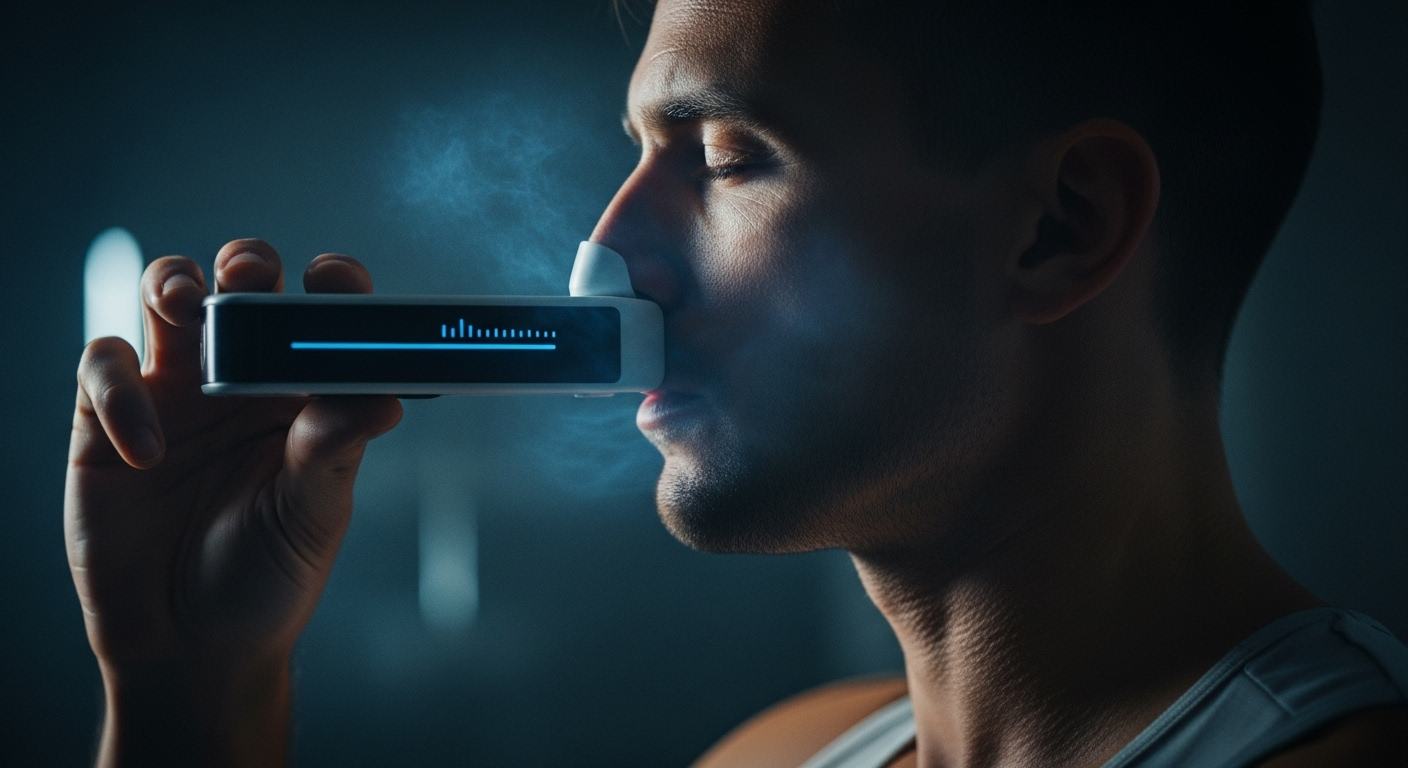Biohacking Your Breath: The Emerging Science of Respiratory Fitness
Can the way you breathe reshape your health? Emerging research suggests that intentional breathing techniques may be a powerful, yet underutilized tool for enhancing physical and mental well-being. From boosting cognitive function to improving athletic performance, the science of respiratory fitness is breathing new life into our understanding of holistic health.

Recent studies have shown that specific breathing techniques can influence everything from our nervous system to our immune function. By manipulating the depth, rate, and rhythm of our breath, we can potentially alter our physiological state, impacting stress levels, cognitive performance, and even chronic health conditions.
The Science Behind Respiratory Fitness
At the core of respiratory fitness is the concept of respiratory muscle training (RMT). This involves exercises designed to strengthen the diaphragm and intercostal muscles, which play crucial roles in the breathing process. Research published in the Journal of Sports Science and Medicine has demonstrated that RMT can lead to improved lung function, increased exercise capacity, and reduced breathlessness in both athletes and individuals with respiratory conditions.
Moreover, controlled breathing exercises have been shown to activate the parasympathetic nervous system, our body’s rest and digest mode. This activation can lead to reduced heart rate, lowered blood pressure, and decreased levels of stress hormones like cortisol.
Techniques for Optimizing Breath
Several breathing techniques have gained attention for their potential health benefits:
Box Breathing: This technique involves inhaling, holding the breath, exhaling, and holding again, each for a count of four. It’s been adopted by Navy SEALs for stress management and has shown promise in reducing anxiety and improving focus.
Diaphragmatic Breathing: Also known as belly breathing, this technique emphasizes the use of the diaphragm muscle. Studies have linked it to reduced stress, improved core stability, and better oxygen efficiency.
Alternate Nostril Breathing: This yogic practice involves breathing through one nostril at a time. Research suggests it may help balance the autonomic nervous system and improve cardiovascular function.
Wim Hof Method: Combining deep breathing with cold exposure and meditation, this method has been associated with enhanced immune function and stress resilience in preliminary studies.
Applications in Health and Performance
The potential applications of respiratory fitness extend across various domains of health and performance:
Athletic Enhancement: Elite athletes are increasingly incorporating breath work into their training regimens. A study in the Journal of Strength and Conditioning Research found that swimmers who underwent RMT showed significant improvements in both respiratory muscle strength and swimming performance.
Stress Management: Controlled breathing exercises have been shown to reduce symptoms of anxiety and depression. A study published in Frontiers in Psychology demonstrated that a brief daily breathing practice led to lower perceived stress levels and improved emotional regulation.
Cognitive Function: Emerging research suggests that certain breathing techniques may enhance cognitive performance. A study in the Journal of Neuroscience found that rhythmic breathing exercises could synchronize neural oscillations in brain regions associated with attention and sensory processing.
Pain Management: Some studies have explored the use of breathing techniques as a complementary approach to pain management. A systematic review in Pain Medicine found evidence supporting the efficacy of slow breathing techniques in reducing chronic pain intensity.
Challenges and Considerations
While the field of respiratory fitness shows promise, it’s important to approach it with a balanced perspective. Not all claims are equally supported by robust scientific evidence, and more research is needed to fully understand the mechanisms and long-term effects of various breathing techniques.
Additionally, individuals with certain health conditions should consult with a healthcare professional before engaging in intensive breathing exercises. Hyperventilation, for example, can be dangerous for people with certain cardiovascular or respiratory issues.
The Future of Breath as Medicine
As research in respiratory fitness continues to evolve, we may see breathing techniques increasingly integrated into mainstream healthcare and wellness practices. The potential for non-invasive, cost-effective interventions that leverage the power of breath is exciting for both preventative health and disease management.
Wearable technology and mobile apps are already emerging to guide users through breathing exercises and track their progress. As these tools become more sophisticated, they may offer personalized breathing protocols based on individual health data and goals.
Breathe Better, Live Better: Key Insights
• Nasal breathing during exercise may improve performance and reduce exercise-induced asthma symptoms
• The 4-7-8 breathing technique has been linked to faster sleep onset and reduced insomnia
• Practicing coherent breathing (5 breaths per minute) for 20 minutes daily may help lower blood pressure
• Humming or making a buzzing sound while exhaling can increase nitric oxide production in the nasal cavities, potentially boosting immune function
• Breath holding exercises, when done safely, may improve CO2 tolerance and enhance overall breathing efficiency
A Breath of Fresh Perspective
The science of respiratory fitness offers a compelling reminder of the profound connection between our breath and our overall health. By harnessing the power of intentional breathing, we may unlock new pathways to improved physical and mental well-being. As research in this field continues to expand, it invites us to reconsider the simple act of breathing not just as an automatic function, but as a powerful tool for optimizing our health and performance.





